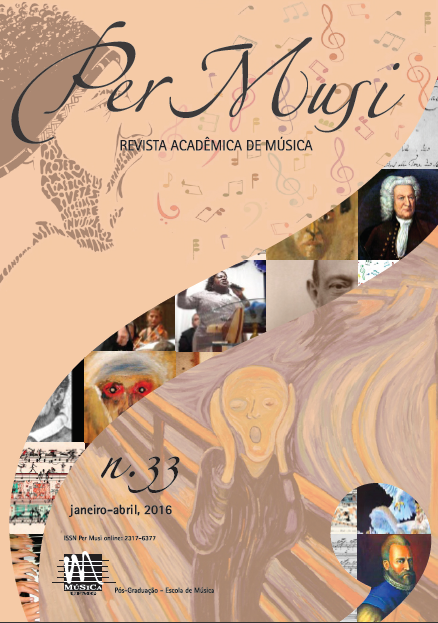A Arte da improvisação musical ao teclado no Renascimento italiano: a didática do contraponto segundo Girolamo Diruta (1610)
DOI:
https://doi.org/10.1590/permusi20163304Palavras-chave:
contraponto renascimentista, improvisação em teclados antigos, Girolamo DirutaResumo
Parte fundamental do exercício profissional do tecladista no Renascimento, a improvisação musical é o relevante tema do livro II da segunda parte do tratado Il Transilvano (1610). Única obra publicada pelo organista Girolamo Diruta (1554? ‐ 1610?), o Transilvano expõe em ‘Diálogo’ as preceptivas da arte da música de seu tempo e é Monumentum da memória dos principais mestres atuantes na Sereníssima República de Veneza no século XVI – Adriano Willaert, Gioseffo Zarlino e Claudio Merulo. Padre da ordem franciscana e reconhecido organista das igrejas catedrais de Chioggia e Gobbio, Diruta registra por extenso a fortuna do ensino da Fantasia ao teclado como ápice e fim de um profundo estudo do Contraponto e seus artifícios. A partir da exposição desses preceitos, o presente artigo pretende contextualizar a livre – mas “correta” – manipulação dos sons segundo aquela técnica histórica e oferecer ao seu leitor um panorama da didática da música renascentista.
Downloads
Publicado
Edição
Seção
Licença

Exceto onde está indicado, o conteúdo neste site está sob uma Licença Creative Commons - Atribuição 4.0 Internacional.












